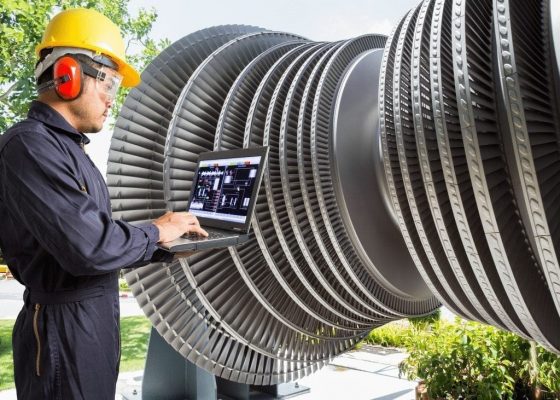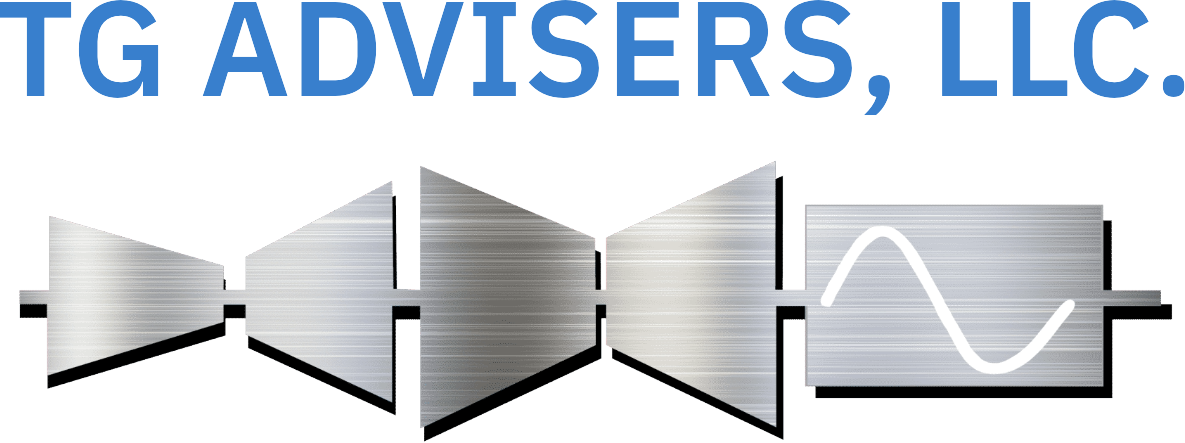Dynamic Reinspection Intervals
LP Shrunk-On Disc and Blade Attachment
Inspection Findings:
During an outage, phased array ultrasonic testing of DFLP shrunk-on discs found no recordable indications on any of the disc bores or keyways. OEM guideline reinspection intervals for the shrunk-on discs set an hourly recommendation that required multiple reinspections between majors. However, since reinspection intervals were established, operating pattern of the unit changed significantly.
Analysis Completed:
Two methods of crack propagation were considered – stress corrosion cracking and low cycle fatigue. SCC is a well-documented industry phenomenon that occurs in wet steam environments with increased probability as the unit’s service hours exceed 150,000. SCC crack growth rates are driven by a number of factors including material yield strength, stage operating temperature, and steam chemistry. It is dependent on operating time and not cycles. LCF is caused by repeated stresses during both regular start and stop cycles and overspeed cycles.
TG Advisers used FEA modeling to quantify startup and overspeed stresses in both the shrunk-on disc keyway and the blade attachment. The maximum stresses seen in the rotor steeples and in the disc bore and conservative material properties were used to calculate the minimum critical crack size. A safety factor was applied to that value to set a reinspection crack size.

FEA modeling of rotor blade attachment showing stresses in the steeples
The crack growth evaluation method is based on fracture mechanics principles and assumes an initial flaw—in this case TGA assumed a flaw the size of the minimum detectable from the clean PAUT inspection. The crack propagation from each phenomenon is calculated based on the actual number of cycles and operating hours the unit has completed, then summed to create a total crack growth amount. This value is compared to the reinspection crack size to determine when reinspection intervals should be set.
Analysis Findings:
The following two scenarios illustrate the effects of duty cycle on the LP reinspection intervals. One of the most significant benefits in this type of automated analysis program is that only the operational hours and stop/starts need to be input in order to output a visual representation of crack progression.
In the dynamic reinspection plots, the reinspection crack size is indicated with the solid red line. The dashed red line shows the calculated crack propagation based on the user inputted duty cycle. When the two lines meet is when a reinspection is required.
The two major contributing crack growth phenomena (SCC and LCF) are shown in green and blue lines respectively. The circles reflect the amount of crack propagation from SCC/operational hours (green) and LCF/cycles (blue) experienced to date. The scenario shown in Figure 1 shows a base loaded operation where most of the crack propagation has come from SCC (green) and there is only a small amount from LCF (blue). In this instance, the solid black line shows the calculated crack propagation is currently 73.8% of the way to the reinspection crack size.
To compare, Figure 2 shows the same unit but with an operational profile that focuses on cycling. It has three times as many cycles as the previous scenario and significantly fewer operational hours. However, crack propagation is still in a similar range.
Improvements:
In this specific case study, when the actual operating profile of the unit was reviewed, the reinspection intervals for the shrunk-on disc and blade attachments were found to be excessively frequent. Therefore, the dynamic reinspection interval methodology allowed for a reduction in the frequency of outages driven by reinspection of the shrunk-on disc and blade attachments of the DFLP.


